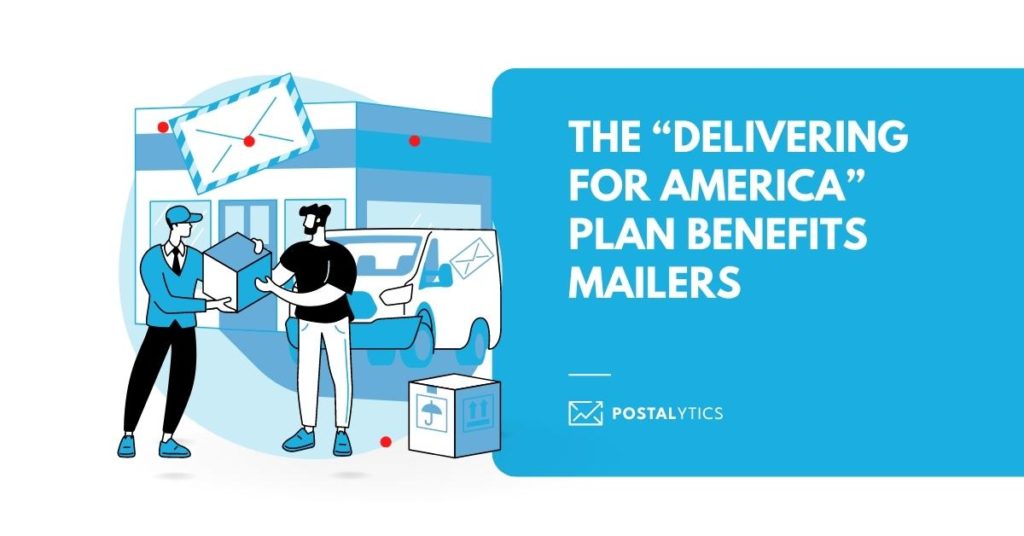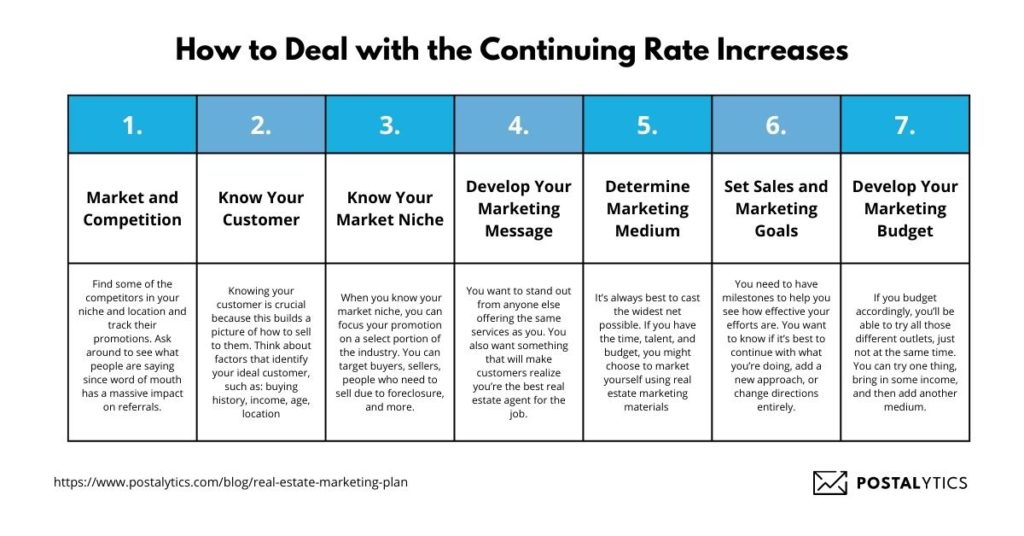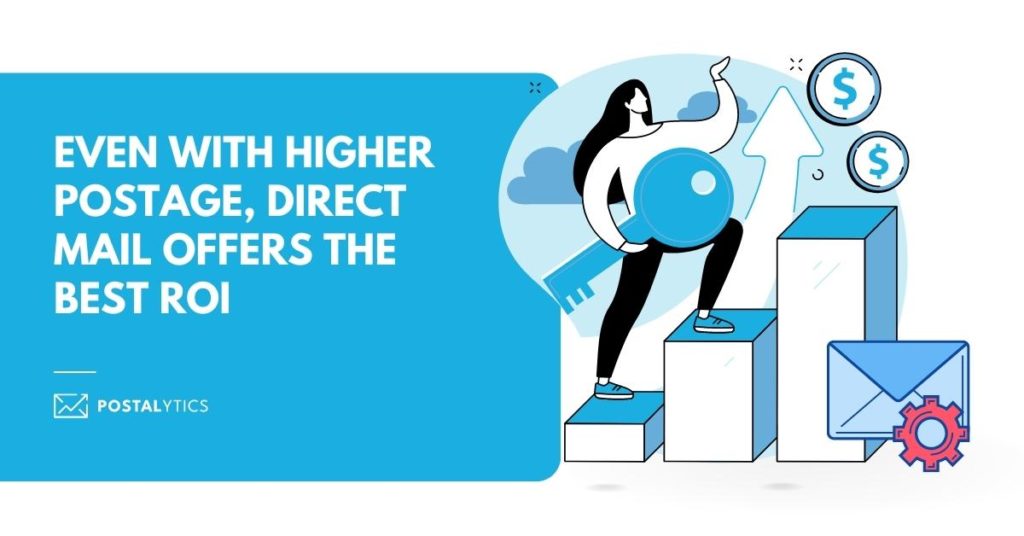
Until recently, the US Postal Service changed postage rates once a year.
Typically, the overall increases were capped, and mailers could count on postage changes in January, usually learning about the upcoming rates in October of the previous year. Because of rulings by the Postal Regulatory Commission, the USPS now has a great deal more flexibility in how and when they change postage rates.
For the next few years, mailing organizations should count on price adjustments twice a year. Today, we will review the Postal Service’s new policies and pricing authority, and how pricing adjustments fit with the USPS’ ten-year plan called “Delivering for America.”
Table of contents
- What is the Postal Service’s “Delivering for America” Plan?
- How Does the “Delivering for America” Plan Benefit Mailers?
- Pricing: Market Dominant and Competitive Products
- Postage Rates Through 2025
- Postage Rates in 202 4
- 5 Ways to Deal with the USPS’ Continuing Rate Increases
- Even with higher postage, direct mail still offers the best ROI
What is the Postal Service’s “Delivering for America” Plan?
The Postal Service published the Delivering for America (DFA) plan on March 23, 2021, “To transform the United States Postal Service from an organization in financial and operational crisis to one that is self-sustaining and high performing.”1
Considerable work remains to address the Postal Service’s financial and operational performance. However, the 10-year DFA transformation plan includes the framework of a strategy to achieve its stated goals and provide excellent service to the nation.
How Does the “Delivering for America” Plan Benefit Mailers?

The USPS DFA plan suggests some tangible benefits for mailing organizations. Here are a few:
- The plan details improvements to package delivery services, including delivery 7 days/per week. In 2020, USPS customers selected one or two-day service in 72% of parcel shipping instances. This could grow to be as high as 90% by 2025. The USPS generates more revenue and improves service by increasing the delivery frequency for core products.
- The USPS will invest in people, technology, and infrastructure, including its delivery fleet. The Postal Service expects the first new vehicles to appear in 2024. They will include advanced safety and comfort features, be environmentally sustainable, and provide additional loading and cargo space.
- The USPS plans to equip all carriers with mobile technology to improve service and tracking. This will allow the Post Office to meet or exceed 95% on-time delivery. They also plan to improve delivery efficiencies by investing in additional automated sorting equipment.
Pricing: Market Dominant and Competitive Products
Market-dominant products offered by the USPS comprise mailing services like First-Class, Marketing Mail, and Periodicals.
Because the Post Office is the only entity in the US that delivers this type of mail, it has significant power over the market. As a result, the pricing of these products is limited by the USPS’s regulator through pricing caps outlined in law and regulations.2
Competitive postal products are similar to products and services available from private carriers. The USPS must cover its costs for competitive products and cannot subsidize the costs with revenue from market-dominant products. Priority Mail and Parcel Select are examples of competitive products.
Postage Rates Through 2025
According to MAIL Magazine, postage rates will rise by 20% by 2025. Inflation is a factor here, as it is tied to potential rate increases. The Postal Rate Commission has also granted the Postal Service new rate-adjustment authority. To compare, rates in 2022 increased by 10% over the postage rates of 2021. Mailers have enjoyed a decade of modest rate hikes because of low inflation and the rate cap. That is changing somewhat.3
Postage Rates in 2024
Depending on category and mail type, postage rates will increase from 3.2% to 6.2% in January 2024. Speculations are already circulating about the second 2024 rate increase in July. None of the predictions suggest the increase will be lower than the January 2024 adjustments.4
The Postal Service does not apply postage rate increases equally across all mail classes and types. Some mail may be subject to increases greater than the overall average, while the USPS raises the relative postage rates for other types of mail to a lesser degree. The object of these unequal adjustments is to align rates with the mail’s handling and delivery costs. Periodicals and postcards, for example, are handled differently within the USPS sorting and delivery workflow. The costs to process them differ.
5 Ways to Deal with the USPS’ Continuing Rate Increases

Mailers have no control over some factors that affect postage rates. These include matching the Consumer Price Index (CPI) cap at the time of the filing. Other new pricing authorities available to the USPS include a density-rate authority, a retirement-based authority, and an “underwater” authority. Mailers can take steps, however, to lower the impact of postage rate increases on their annual marketing budgets and improve the ROI of their mailing campaigns.
- Keep your list up to date. CASS and NCOA cleansing included in the Postalytics platform ensures mailers won’t waste money on mail that the USPS cannot deliver to the intended recipients.
- Target only those who fit your demographics. Use information from your CRM or other sources to avoid spending money on mail irrelevant to a recipient.
- Review your mail piece size and design and avoid non-machineable surcharges. Mailings designed with Postalytics will always follow USPS specifications.
- Co-mingle your mail with other mailers for greater pre-sort workshare postage discounts. Postalytics has already built discounted postage rates into our pricing.
- Get some help. You have an accountant and a tax advisor. Postal representatives, as well as hardware and software providers, deal with postal issues every day. They are an excellent resource for advice. When in doubt, check out Postalytics’ extensive resources or customer support representatives.
Even with higher postage, direct mail still offers the best ROI

Digital marketing channels are saturated. So much so that the response rate is lower than ever. Direct mail offers tangibility, permanence, and a visual experience in almost every industry. It cuts through the digital chatter. The challenge is connecting digital to direct mail for leveraging data gathered from web pages, email, and social media.
Postalytics provides enterprise-grade direct mail automation with workflow, integration, and analytics. Integrate Postalytics with your existing CRM, marketing automation, or eCommerce software and harness the power of automated direct mail marketing. From one to 100,000 mail pieces, the Postalytics direct mail platform makes your current digital channels more responsive.
Sources:
- https://about.usps.com/what/strategic-plans/delivering-for-america/
- https://www.pitneybowes.com/us/blog/delivering-for-america-key-ecommerce-takeaways-on-the-usps.html
- https://mailomg.com/2022/10/13/heard-at-mailcom-single-piece-mail-service-stinks-and-its-been-stinking-for-a-while-postage-rates-will-rise-20-by-2025-jury-out-on-pmg-industry-continues-to/
- https://www.piworld.com/article/usps-files-price-increase-january-2023/
About the Author

Dennis Kelly
Dennis Kelly is CEO and co-founder of Postalytics. Dennis joined Boingnet, the predecessor to Postalytics, in 2013. Boingnet was focused on providing print and direct mail marketing service providers the ability to add digital marketing channels to their direct mail campaigns. Postalytics is Dennis’ 6th startup. He has been involved in starting and growing early-stage technology ventures for over 30 years and has held senior management roles at a diverse set of large technology firms including Computer Associates, Palm Inc. and Achieve Healthcare Information Systems.
